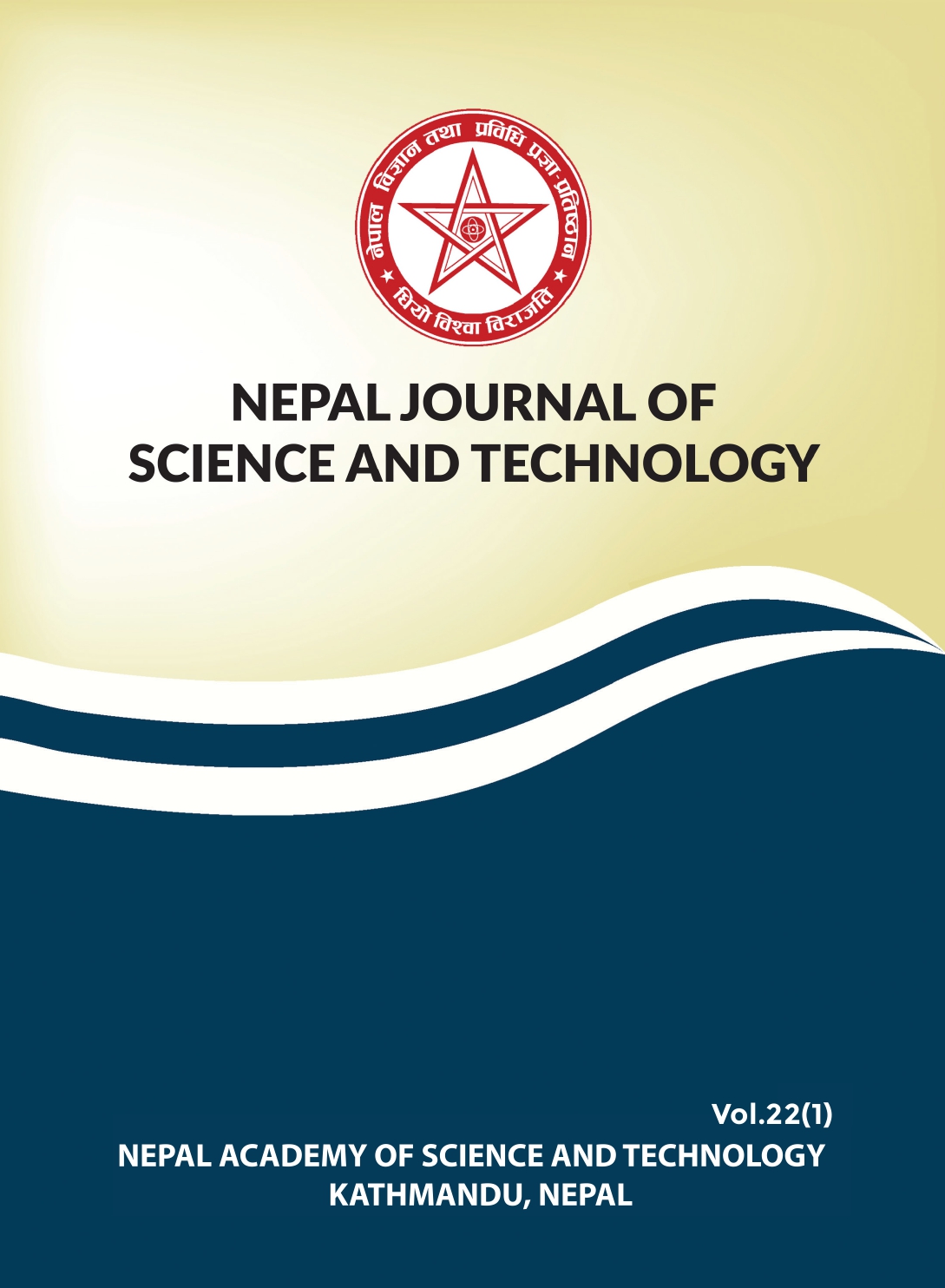Electronic Properties of Semiconducting Nanowires: A Comparative Study
DOI:
https://doi.org/10.3126/njst.v22i1.67168Keywords:
Nanowire, Electronic Properties, Density Functional Theory, Pseudopotential, Band StructureAbstract
The presented work has explored the comparative study of electronic properties of semi conducting nanowires of different materials. These nanowires have critical role in photovoltaic and it shapes the future of new and renewable energy. The study has been performed for different shapes of nanowires. The various shapes under consideration are 2-atom Linear Nanowire, 2-atom Zigzag Nanowire, 4-atom Square Nanowire and 6-atom Hexagonal Nanowire. The findings for electronic properties reveal that 2-atom linear wire can be conducting as well semi conducting, 2-atom zigzag wire is conducting for almost all materials, 4-atom square wire is insulating for most of the materials while 6-atom hexagonal wire has come out to be insulating for all materials. Hence a semiconducting material shows conducting, semiconducting and insulating behavior depending on the proposed shape for various materials.
Downloads
Downloads
Published
How to Cite
Issue
Section
License
Copyright (c) 2023 The Author(s)

This work is licensed under a Creative Commons Attribution-NonCommercial 4.0 International License.
Authors retain copyright and grant the journal right of first publication.




